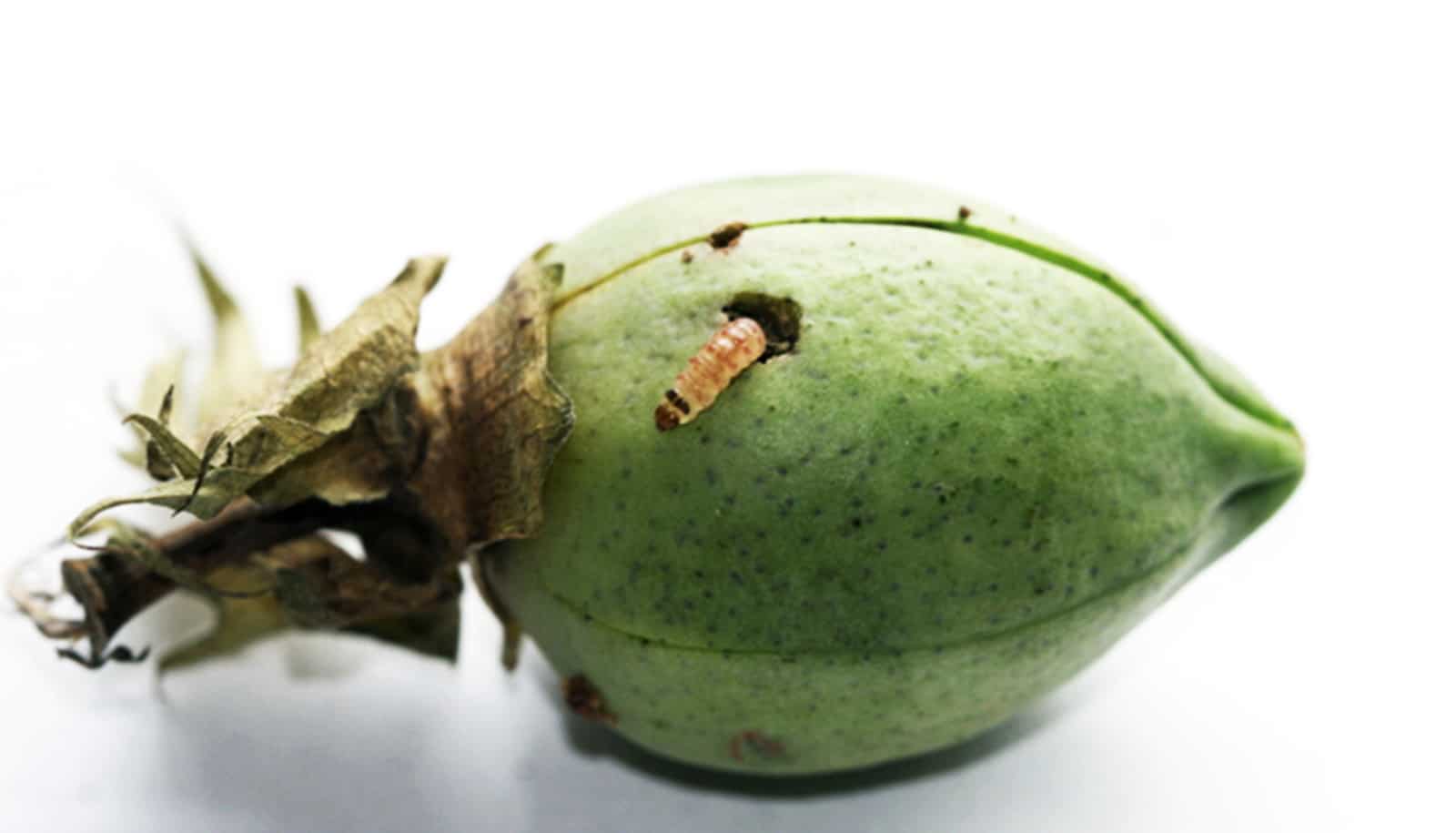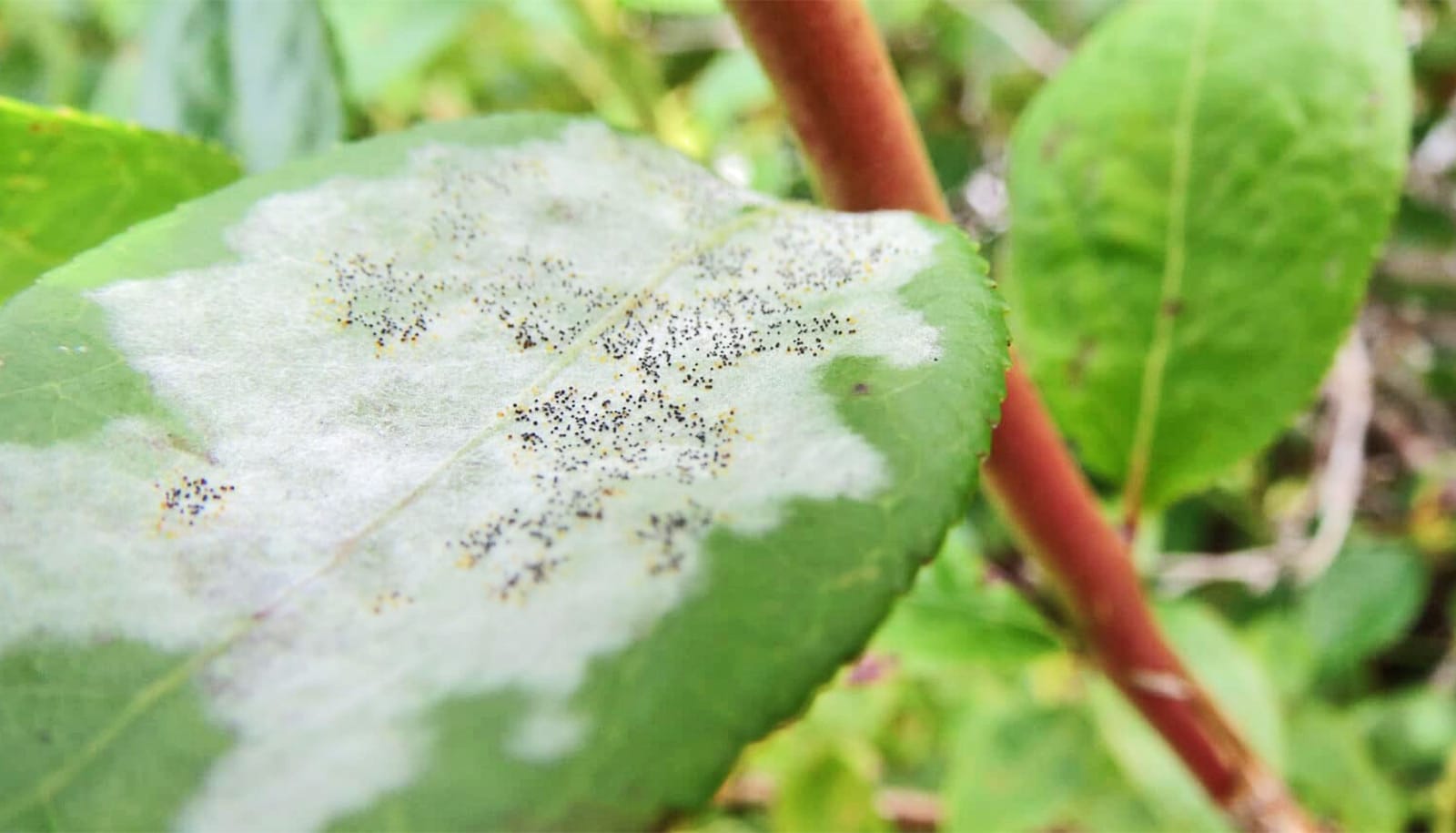Mixing genetically engineered cotton with conventional cotton to create hybrid plants reduces—or even reverses—resistance in the pink bollworm, a new study shows.
The research is of particular importance at a time when insect pests that are rapidly adapting to genetically engineered crops threaten agriculture worldwide.
For the study, published in the Proceedings of the National Academy of Sciences, researchers tested more than 66,000 pink bollworm caterpillars from China’s Yangtze River Valley, a vast region of southeastern China that is home to millions of smallholder farmers, over 11 years.
According to the study’s authors, this is the first reversal of substantial pest resistance to a Bt crop. “We have seen blips of resistance going up and down in a small area,” says senior author Bruce Tabashnik, a professor in the University of Arizona’s College of Agriculture and Life Sciences.
“But this isn’t a blip. Resistance had increased significantly across an entire region, then it decreased below detection level after this novel strategy was implemented.”
Evolving resistance
Cotton, corn, and soybean have been genetically engineered to produce pest-killing proteins from the widespread soil bacterium Bacillus thuringiensis, or Bt. These Bt proteins are considered environmentally friendly because they are not toxic to people and wildlife. They have been used in sprays by organic growers for more than 50 years, and in engineered Bt crops planted by millions of farmers worldwide on more than 1 billion acres since 1996.
Unfortunately, without adequate countermeasures, pests can quickly evolve resistance.
‘Natural enemies’ help modified crops control pests
The primary strategy for delaying resistance is providing refuges of the pests’ host plants that do not make Bt proteins. This allows survival of insects that are susceptible to Bt proteins and reduces the chances that two resistant insects will mate and produce resistant offspring.
Before 2010, the US Environmental Protection Agency required refuges in separate fields or large blocks within fields. Planting such non-Bt cotton refuges is credited with preventing evolution of resistance to Bt cotton by pink bollworm in Arizona for more than a decade. By contrast, despite a similar requirement for planting refuges in India, farmers there did not comply and pink bollworm rapidly evolved resistance.
The ingenious strategy used in China entails interbreeding Bt cotton with non-Bt cotton, then crossing the resulting first-generation hybrid offspring and planting the second-generation hybrid seeds. This generates a random mixture within fields of 75 percent Bt cotton plants side-by-side with 25 percent non-Bt cotton plants.
“Because cotton can self-pollinate, the first-generation hybrids must be created by tedious and costly hand pollination of each flower,” says Tabashnik. “However, hybrids of the second generation and all subsequent generations can be obtained readily via self-pollination. So, the hybrid mix and its benefits can be maintained in perpetuity.”
Why some GM crops fail to fight pests
Tabashnik calls this strategy revolutionary because it was not designed to fight resistance and arose without mandates by government agencies. Rather, it emerged from the farming community of the Yangtze River Valley.
‘A new option for managing resistance’
While most previous attention has focused on the drawbacks of interbreeding between genetically engineered and conventional plants, the authors point out that the new results demonstrate gains from such hybridization.
“For the growers in China, this practice provides short-term benefits,” Tabashnik adds. “It’s not a short-term sacrifice imposed on them for potential long-term gains. The hybrid plants tend to have higher yield than the parent plants, and the second-generation hybrids cost less, so it’s a market-driven choice for immediate advantages, and it promotes sustainability. Our results show 96 percent pest suppression and 69 percent fewer insecticide sprays.”
Although seed mixtures of corn have been planted in the United States since 2010, the effects of seed mixtures on pest adaptation were not tested before on a large scale, he explains. “Our study provides the first evidence that planting mixtures of Bt and non-Bt seeds within fields has a resistance-delaying or, in this case, resistance-reversing effect,” Tabashnik says.
Unlike the strategy in China, the corn seed mixtures planted in the US do not involve interbreeding. Also, the corn seed mixtures have as little as 5 percent non-Bt corn, which may not be enough to battle resistance effectively.
“This study gives a new option for managing resistance that is very convenient for small-scale farmers and could be broadly helpful in developing countries like China and India,” explains coauthor Kongming Wu, who led the work conducted in China and is a professor in the Institute of Plant Protection in Beijing.
“A great thing about this hybrid seed mix strategy is that we don’t have to worry about growers’ compliance or regulatory issues,” Tabashnik says. “We know it works for millions of farmers in the Yangtze River Valley. Whether it works elsewhere remains to be determined.”
Grants from the National Natural Science Foundation of China, China’s Key Project for Breeding Genetically Modified Organisms, and USDA Biotechnology Risk Assessment supported the research.
Source: University of Arizona



